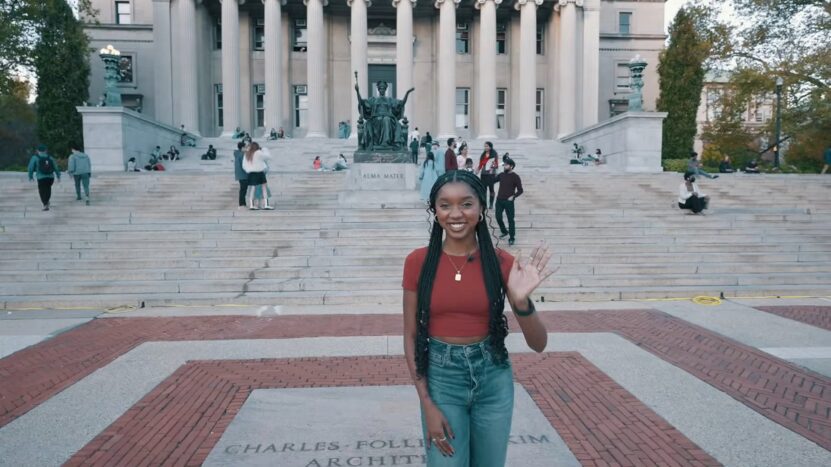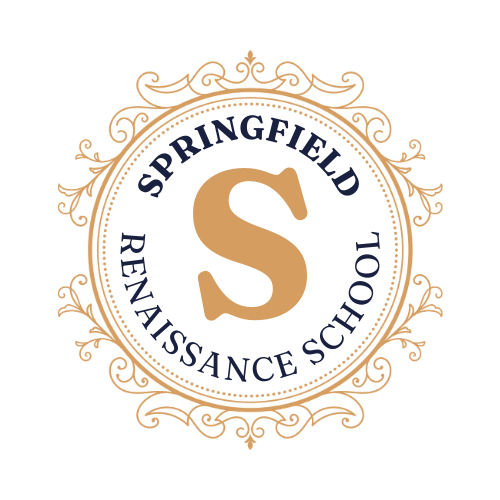
Share Post:
College admissions have become more competitive than ever, with top-tier institutions admitting fewer students each year. A low acceptance rate often signals a combination of academic rigor, exclusivity, and institutional reputation.
High-performing students around the world compete for limited spots, pushing acceptance rates even lower. Of course, those are often among the most expensive ones in the country.
Competitive admissions reflect the growing emphasis on leadership, innovation, and academic excellence, encouraging applicants to present well-rounded profiles rather than relying solely on grades and test scores.
Let us talk about it in greater detail.
| Rank | College/University | Acceptance Rate |
|---|---|---|
| 10 | Princeton University | 6% |
| 9 | University of Chicago | 5% |
| 8 | Brown University | 5% |
| 7 | Yale University | 5% |
| 6 | Massachusetts Institute of Technology (MIT) | 4% |
| 5 | Columbia University | 4% |
| 4 | Stanford University | 4% |
| 3 | Harvard University | 3% |
| 2 | California Institute of Technology (Caltech) | 3% |
| 1 | Minerva University | 1% |
10. Princeton University – 6%
- Acceptance rate: 6%
- Address: Princeton, New Jersey
- Year of foundation: 1746
- Specialty: Humanities, sciences, and leadership
- Admissions focus: Leadership, academic excellence, and service
Princeton University remains one of the most prestigious institutions in the world, known for its rigorous academic environment and strong emphasis on leadership and public service.
Its competitive admissions process reflects the high caliber of students it attracts, many of whom excel in:
- Academics
- Extracurriculars
- Community engagement
The university’s commitment to academic excellence ensures that students face a challenging yet rewarding educational experience that prepares them for leadership roles in various fields.
The university’s liberal arts foundation encourages students to explore a broad range of disciplines while also allowing for specialized study in the sciences, humanities, and social sciences.
Princeton’s intimate class sizes foster close relationships between students and professors, allowing for personalized guidance and academic support.
The university places a strong emphasis on service and leadership development. The Princeton Service and Civic Engagement program connects students with opportunities to make a tangible impact on local and global communities.
Leadership training and mentorship programs help students develop skills that extend beyond the classroom, preparing them to become influential figures in their respective fields.
9. University of Chicago – 5%
- Acceptance rate: 5%
- Address: Chicago, Illinois
- Year of foundation: 1890
- Specialty: Core curriculum and critical thinking
- Admissions focus: Analytical and intellectual engagement
The University of Chicago maintains a reputation for intellectual rigor and academic intensity.
A challenging core curriculum lies at the center of its educational model, requiring students to engage with a wide range of disciplines, including humanities, social sciences, natural sciences, and mathematics.
Critical thinking and analytical skills receive a heavy focus, as students are encouraged to question established norms and engage with complex philosophical and theoretical concepts. Academic discussions often push students to think creatively and develop original arguments.
Admissions at the University of Chicago reflect its intellectual culture. The application process includes the famous “Uncommon Essay,” which challenges applicants to answer unconventional prompts that test their creativity and ability to think critically.
Essays such as “Find X” or “What’s so odd about odd numbers?” have become legendary for their ability to identify intellectually curious and creative students.
Strong academic performance, particularly in challenging coursework, remains a key factor, but a student’s ability to present thoughtful and original ideas often makes the difference in gaining admission.
8. Brown University – 5%
- Acceptance rate: 5%
- Address: Providence, Rhode Island
- Year of foundation: 1764
- Specialty: Flexible curriculum and student-directed learning
- Admissions focus: Independence, creativity, and interdisciplinary thinking
Brown University has earned recognition for its open curriculum, allowing students to tailor their academic paths without the constraints of traditional general education requirements.
The open curriculum promotes intellectual freedom, encouraging students to explore different fields and combine disciplines in innovative ways.
Brown values creativity and independence, seeking applicants who demonstrate a capacity for self-directed learning and a willingness to engage with complex ideas.
Founded in 1764, Brown remains one of the oldest institutions of higher education in the United States. Located in Providence, Rhode Island, the university fosters a collaborative atmosphere where students are encouraged to think critically and pursue unique academic combinations.
The admissions process focuses on more than just academic performance, placing significant weight on personal character, creativity, and a demonstrated passion for learning.
7. Yale University – 5%
- Acceptance rate: 5%
- Address: New Haven, Connecticut
- Year of foundation: 1701
- Specialty: Liberal arts and social sciences
- Admissions focus: Intellectual curiosity and leadership
Yale University has long been recognized for its commitment to academic excellence and leadership development. Its foundation in 1701 established it as one of the oldest institutions of higher learning in the United States.
The university’s focus on liberal arts and social sciences fosters a multidisciplinary approach to education, encouraging students to engage with a wide range of intellectual fields.
A close-knit academic community shapes Yale’s culture, allowing students to form meaningful connections with professors and peers. Small class sizes and a low student-to-faculty ratio ensure personalized attention, creating an environment where students feel supported academically and socially.
Yale’s residential college system strengthens this sense of community, as students live and learn within smaller groups that provide a home-like atmosphere.
A strong emphasis on leadership and intellectual curiosity defines Yale’s admissions process. Applicants are evaluated not only on academic performance but also on their capacity to think critically, engage with complex ideas, and demonstrate initiative.
6. Massachusetts Institute of Technology (MIT) – 4%
Thanks to researchers at MIT & UChicago, we’ve unlocked more lunar secrets with the help of Apollo mission samples. https://t.co/LndMif61E5 pic.twitter.com/8BXz3OjpWA
— Massachusetts Institute of Technology (MIT) (@MIT) February 15, 2025
- Acceptance rate: 4%
- Address: Cambridge, Massachusetts
- Year of foundation: 1861
- Specialty: Engineering and technology
- Admissions focus: Research, creativity, and problem-solving
MIT remains a global leader in science and technology, known for its rigorous academic programs and groundbreaking research. Engineers, scientists, and innovators worldwide view MIT as a hub for technological advancement and creative thinking.
Research opportunities extend to undergraduates, offering hands-on experience with cutting-edge projects and access to world-class faculty. Students engage in a collaborative environment that promotes problem-solving and interdisciplinary thinking.
Creativity and technical expertise weigh heavily in the admissions process. Strong mathematical and analytical skills are not enough; applicants must also demonstrate curiosity, innovation, and a willingness to challenge existing norms.
High performance in STEM fields, participation in research projects, and evidence of independent thinking strengthen a candidate’s profile.
MIT values candidates with the ability to apply theoretical knowledge to practical solutions, reflecting the institution’s commitment to technological progress.
5. Columbia University – 4%

- Acceptance rate: 4%
- Address: New York, New York
- Year of foundation: 1754
- Specialty: Humanities and social sciences
- Admissions focus: Academic excellence and cultural engagement
Columbia University remains one of the most competitive institutions in the world, with an acceptance rate of just 4%. Situated in the heart of New York City, Columbia provides students with direct access to some of the most influential industries, including finance, media, technology, and the arts.
The university’s location offers unparalleled networking opportunities, with students regularly attending lectures, events, and internships hosted by Fortune 500 companies, global organizations, and prestigious cultural institutions.
The university’s core curriculum sets it apart from other Ivy League schools. Every student engages with a structured set of courses covering literature, philosophy, history, and science.
Essays and recommendations play a significant role in helping the admissions team evaluate whether a candidate possesses the intellectual and social traits valued by the university.
4. Stanford University – 4%
- Acceptance rate: 4%
- Address: Stanford, California
- Year of foundation: 1885
- Specialty: Innovation and entrepreneurship
- Admissions focus: Creativity, leadership, and innovation
Stanford University consistently ranks among the most prestigious and competitive universities worldwide. Its location near Silicon Valley places it at the center of technological and entrepreneurial innovation, drawing ambitious students with an interest in shaping the future of science, business, and society.
The university’s interdisciplinary approach encourages students to collaborate across fields, blending technical knowledge with creative problem-solving.
Research and real-world application play a significant role in Stanford’s academic culture, making it an attractive destination for students seeking to combine theoretical learning with practical experience.
Admissions at Stanford follow a holistic review process that considers more than just test scores and academic performance. Leadership qualities, creativity, intellectual curiosity, and a commitment to making a positive impact hold substantial weight.
The university looks for students who demonstrate initiative and the ability to navigate complex challenges, both academically and socially. Applicants who show resilience, adaptability, and the capacity to think critically about global issues tend to succeed in the admissions process.
3. Harvard University – 3%
- Acceptance rate: 3%
- Address: Cambridge, Massachusetts
- Year of foundation: 1636
- Specialty: Liberal arts, sciences, and professional programs
- Admissions focus: Leadership, impact, and character
Harvard University’s prestige and long-standing tradition of academic excellence make it one of the most selective institutions in the world.
Its reputation as an Ivy League leader stems not only from its rigorous academic programs but also from its commitment to developing influential global leaders.
Thousands of high-achieving students apply each year, drawn by the promise of a world-class education, extensive resources, and an influential alumni network that includes U.S. presidents, Nobel Prize winners, and industry pioneers.
A holistic admissions process evaluates each candidate’s academic record, extracurricular achievements, leadership potential, and character.
Strong test scores and grades are important, but the admissions committee places significant weight on an applicant’s ability to inspire change and contribute to society.
Essays and recommendation letters often reflect a student’s personal values, intellectual curiosity, and capacity for growth. The committee actively seeks students who show resilience, creativity, and a clear vision for their future.
2. California Institute of Technology (Caltech) – 3%
- Acceptance rate: 3%
- Address: Pasadena, California
- Year of foundation: 1891
- Specialty: STEM research and innovation
- Admissions focus: Academic excellence in STEM fields
California Institute of Technology (Caltech) remains one of the most prestigious science and engineering institutions in the world. Its reputation for cutting-edge research and groundbreaking technological advancements attracts some of the most gifted minds globally.
A highly selective admissions process reflects the institution’s high academic standards and research-focused culture. Only students with exceptional academic performance, creative thinking, and a demonstrated passion for science and technology make the cut.
Small class sizes foster close relationships between students and faculty, allowing for more focused mentorship and personalized guidance.
A low student-to-faculty ratio ensures that students receive the attention needed to thrive academically and professionally.
Faculty members at Caltech are leading researchers in their fields, often involving undergraduates in groundbreaking projects, which gives students early exposure to high-level research.
Undergraduate research opportunities play a central role in Caltech’s curriculum. Programs such as the Summer Undergraduate Research Fellowships (SURF) allow students to engage directly with faculty and graduate students on innovative projects.
1. Minerva University – 1%
- Acceptance rate: 1%
- Address: San Francisco, California
- Year of foundation: 2012
- Specialty: Global learning model with no physical campus
- Admissions focus: Personal achievement and global perspective
Minerva University has become one of the most selective institutions in the world, with an acceptance rate of just 1%. Its innovative approach to higher education sets it apart, attracting students who seek a different academic experience.
The university operates without a physical campus, embracing a global learning model where students rotate through major cities such as Berlin, Buenos Aires, Seoul, and London as part of their educational experience.
Classes are conducted online using an active learning platform that emphasizes student participation, collaboration, and critical thinking.
The admissions process reflects the institution’s commitment to identifying high-potential students based on more than traditional academic metrics. Standardized test scores are not required. Instead, applicants are evaluated based on personal achievements, demonstrated leadership, problem-solving abilities, and adaptability.
Minerva’s curriculum focuses on developing transferable skills such as critical thinking, creative problem-solving, and effective communication. Students engage in cross-disciplinary coursework that combines elements of the humanities, sciences, and social sciences.
Small class sizes and the university’s commitment to active learning ensure students receive direct interaction with professors and peers.
In Conclusion
High selectivity reflects the strength and reputation of these colleges, attracting ambitious students with exceptional academic and personal profiles.
Strategic planning and thoughtful application strategies increase the chances of admission, but exploring alternative options ensures a balanced and rewarding college search process.
Related Posts:
- The Hardest Colleges to Get Into – 2025 Acceptance…
- The High Cost of Education - 25 Most Expensive US.…
- Discover the Best Apps to Learn Japanese in 2025
- Top 12 Chrome Extensions for Nursing Students in 2025
- What Is eLearning And What Are The Benefits? (2025 Update)
- Lessonly (Now Seismic Learning) - Overview, Features…












